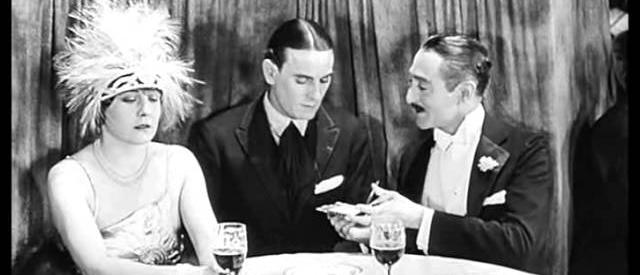
3 minute read
Film
from March 16, 2022
by Ithaca Times
COVID-19: KNOW BEFORE YOU GO! Self-Testing Self-Testing Clínica de Vacunación When & How to Test Plan
• Consider testing before gathering with others, before attending an event, or after travel. You can help prevent the spread of COVID-19. Prep
Advertisement
• Wash hands well and clean area surfaces.
Read all the instructions completely. Test
Testing helps stop the spread • Follow the instructions carefully and take the test as directed. Use a timer to be accurate. • If you test positive, isolate and report your results to TCHD. Scan the code for info and a reporting form, or call 2-1-1.
tompkinscountyny.gov/health
Never Silent
Pre-talkies screen with live music at Cornell Cinema
By Bryan VanCampen

A scene from “Underworld.”
“Elsewhere the night deepened into silence and rest. But here the brutal din of cheap music – booze — hate — lust — made a devil’s carnival.”
I watched Josef von Sternberg’s pioneering silent crime epic “Underworld” (1927) on YouTube with no sound — no music, no nothing — but with title cards like the one quoted above, it’s a breeze following the narrative. Visual storytelling hasn’t really changed that much in the history of cinema; even with no sound on my iPhone, it only took me a minute to get into “Underworld.” I can only imagine how much better it would play with music, much less a live musical performance.
Continuing a long tradition, on Friday, March 18 Cornell Cinema will screen “Underworld” with a live score played by Roger Miller and the Anvil Orchestra, an offshoot of CC favorites the Alloy Orchestra.
It wasn’t until I went to Wikipedia to find the film’s cast list that I realized all the characters in “Underworld” have nicknames and aliases: Clive Brook plays a lawyer who has succumbed to alcoholism, “Rolls Royce” Wenset. He finds himself aiding and abetting notorious criminal “Bull” Weed (George Bancroft) and his moll, “Feathers” McCoy (Evelyn Brent).
When you watch a silent film from this era, what you’re really watching is this first generation of filmmakers inventing the medium, cutting from a wide master to an extreme close-up for maximum narrative and emotional impact was relatively new in the 1920s. It certainly is a technique that Sergio Leone loved to employ in his westerns and comedies.
You’re seeing the developing language of film. Maverick filmmaker Roger Corman liked to have lots of kludge, or articulation of the surface, shooting through foreground objects. The big set piece in von Sternberg’s film is a vast, crowded gangster party. There are thick drifts of confetti everywhere, and the actors wade through copious clouds of the stuff. (Now I can’t help but wonder if Roger Corman ever saw “Underworld”?)
On Thursday, March 24, Hans Karl Breslauer’s “The City Without Jews,” based on the novel by Hugo Bettauer, will be shown at Cornell Cinema, with an original score by klezmer violinist Alicia Svigals and silent film pianist Donald Sosin.
For decades, “The City Without Jews” was thought to be lost, until the Filmarchiv Austria found a fragment of it in 1991. When other elements were discovered in Paris in 2015, the Filmarchiv Austria was able to create a full restoration. I wasn’t able to hear the upcoming live score, but the version I watched on Vimeo had a full, klezmer-themed score with piano and lots of strings.
“The City Without Jews” is not antisemitic propaganda, but it is about antisemitism. The story depicts a city that decides to pass a law exiling all Jews; the rich folk party on while riots and hate speech take over the streets and the townspeople. The film has its heart in the right place, but that doesn’t save it from being heavyhanded, didactic and preachy. It simply doesn’t have the dramatic heft that makes a film like “Underworld” play without a sound.
RIP William Hurt (“Altered States,” “Body Heat,” “The Big Chill,” “Gorky Park,” “Kiss of the Spider Woman,” “Broadcast News,” “The Accidental Tourist,” “Dark City,” “A.I. Artificial Intelligence,” “Syriana,” “The Incredible Hulk,” “Captain America: Civil War”)
RIP Conrad Janis (“The Buddy Holly Story,” “Airport 1975,” “The Cable Guy”)








